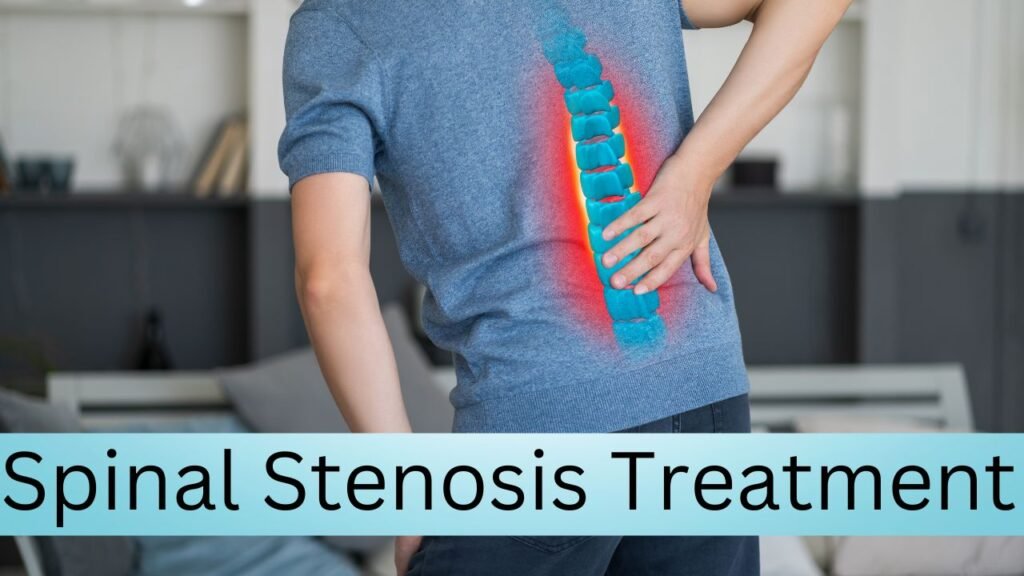Spinal stenosis is a condition that causes narrowing of the spaces within the spine, leading to nerve compression. It commonly affects the lower back (lumbar spine) and neck (cervical spine), resulting in pain, numbness, and mobility issues. While spinal stenosis is often associated with aging, various treatment options can help manage symptoms effectively.

Understanding Spinal Stenosis
Spinal stenosis occurs when the spinal canal narrows, putting pressure on the spinal cord and nerves. This narrowing can result from degenerative changes, bone overgrowth, herniated discs, or thickened ligaments. The severity of symptoms varies, ranging from mild discomfort to debilitating pain and weakness.
Common Causes of Spinal Stenosis
- Osteoarthritis: Age-related wear and tear can lead to bone spurs and joint degeneration.
- Herniated Discs: Bulging or ruptured discs can press against the spinal cord or nerves.
- Thickened Ligaments: Over time, spinal ligaments can become stiff and enlarge, narrowing the canal.
- Congenital Factors: Some individuals are born with a naturally narrow spinal canal.
- Trauma or Injuries: Spinal fractures or dislocations may lead to stenosis.
Symptoms of Spinal Stenosis
The symptoms depend on the affected region of the spine. The most common signs include:
- Lower back pain that worsens with standing or walking.
- Leg numbness, tingling, or weakness, commonly known as neurogenic claudication.
- Pain relief when sitting or bending forward, as it temporarily relieves nerve pressure.
- Neck pain and stiffness, often accompanied by arm numbness or weakness.
- Difficulty with balance and coordination, especially in severe cases.
- Loss of bladder or bowel control, which may indicate a medical emergency.
Best Treatment Options for Spinal Stenosis
Treatment for spinal stenosis depends on the severity of symptoms. While mild cases can be managed with conservative approaches, severe cases may require advanced interventions.
1. Lifestyle Modifications
- Activity adjustments: Avoid prolonged standing or walking; use a walker if necessary.
- Weight management: Reducing excess weight decreases pressure on the spine.
- Postural corrections: Maintain proper alignment to minimize stress on the spine.
2. Physical Therapy
- Stretching exercises: Improves flexibility and reduces stiffness.
- Strength training: Focuses on core and back muscles to support the spine.
- Aerobic exercises: Low-impact activities like swimming or cycling enhance circulation.
3. Medications for Pain Relief
- NSAIDs (Nonsteroidal Anti-Inflammatory Drugs): Reduce inflammation and pain.
- Muscle relaxants: Help relieve muscle spasms associated with stenosis.
- Corticosteroids: Oral or injectable steroids may be used for short-term relief.
- Neuropathic pain medications: Drugs like gabapentin help with nerve-related pain.
4. Epidural Steroid Injections
- Provides temporary relief by reducing inflammation around the affected nerves.
- Useful for patients with moderate to severe pain who need symptom relief.
- Effects typically last several weeks to months, but multiple injections may be needed.
5. Chiropractic Care and Alternative Therapies
- Manual spinal adjustments: May help improve mobility but should be done cautiously.
- Acupuncture: Some patients find relief through this traditional pain management method.
- Massage therapy: Helps alleviate muscle tightness and improve circulation.
6. Assistive Devices and Support Braces
- Back braces: Provide stability and reduce strain on the lumbar spine.
- Canes or walkers: Help redistribute weight and improve mobility.
- Orthotic shoe inserts: Support proper posture and spinal alignment.
7. Surgical Treatments for Severe Cases
When conservative treatments fail, surgery may be necessary to relieve nerve compression.
a. Laminectomy (Decompression Surgery)
- Involves removing the lamina (back part of the vertebra) to create more space.
- Helps relieve pressure on the spinal cord and nerves.
- Considered the most common surgery for spinal stenosis.
b. Spinal Fusion
- Joins two or more vertebrae to stabilize the spine after decompression.
- Recommended when stenosis is accompanied by spinal instability.
- Reduces motion in the affected area but may limit flexibility.
c. Minimally Invasive Procedures
- Laminotomy: Removes only a small portion of the lamina to relieve pressure.
- Foraminotomy: Enlarges the openings where nerves exit the spine.
- Interspinous spacers: Small devices placed between vertebrae to reduce nerve compression.
Exercises for Spinal Stenosis Relief
Regular exercise can help strengthen the muscles that support the spine and reduce pain.
1. Pelvic Tilts
- Strengthens core muscles and improves posture.
- Lie on your back, tighten abdominal muscles, and press the lower back to the floor.
2. Seated Forward Bend
- Relieves tension in the lower back and hamstrings.
- Sit on a chair, lean forward gently, and hold the stretch.
3. Knee-to-Chest Stretch
- Increases lower back flexibility and relieves nerve compression.
- Lie on your back, pull one knee toward your chest, and hold.
4. Cat-Cow Stretch
- Enhances spinal mobility and reduces stiffness.
- Start on all fours, arch your back upward, then drop your belly downward.
5. Standing Lumbar Extension
- Helps decompress the lower spine.
- Stand with hands on hips and gently arch your back backward.
Preventing Spinal Stenosis Progression
While some causes of stenosis are unavoidable, the following strategies can help slow its progression:
- Maintain an active lifestyle to keep muscles strong and flexible.
- Use proper lifting techniques to avoid unnecessary spinal strain.
- Stay at a healthy weight to reduce spinal pressure.
- Quit smoking, as it accelerates disc degeneration.
- Incorporate daily stretching to maintain spinal mobility.
When to Seek Medical Attention
Consult a doctor if:
- Pain becomes persistent or worsens despite treatment.
- Leg weakness or numbness affects daily activities.
- Bowel or bladder dysfunction occurs (a possible sign of cauda equina syndrome).
- Walking becomes increasingly difficult due to nerve compression.
Conclusion
Spinal stenosis can be managed with a combination of lifestyle changes, physical therapy, medications, and in some cases, surgery. Identifying symptoms early and choosing the right treatment approach can improve mobility and quality of life. If symptoms persist or worsen, seeking medical advice ensures the best course of action for long-term relief and spinal health.